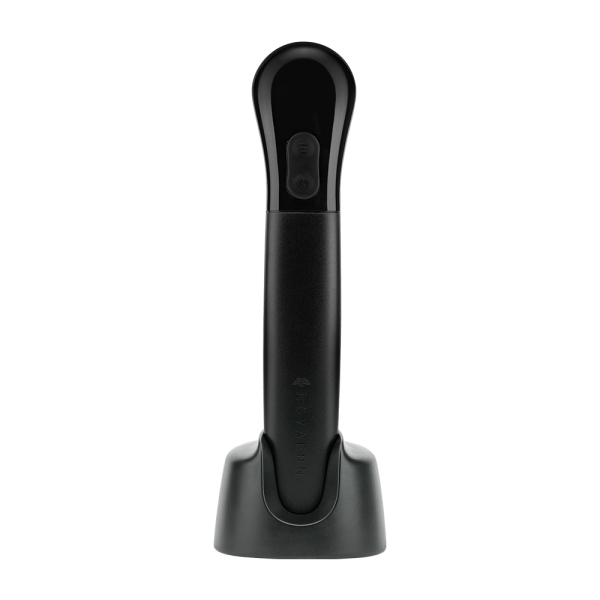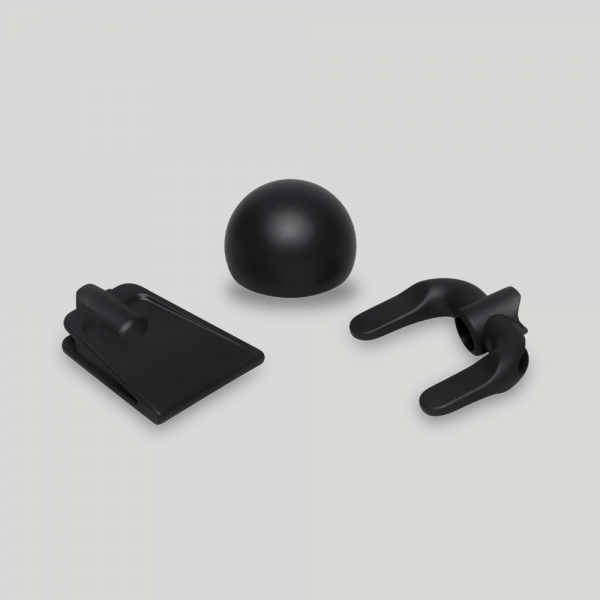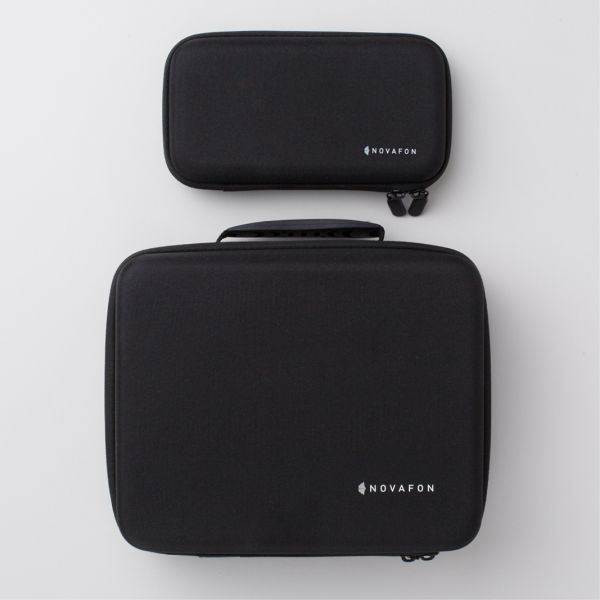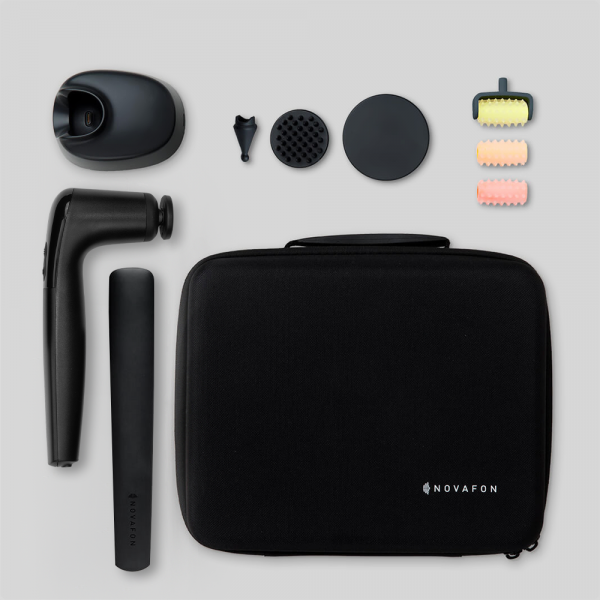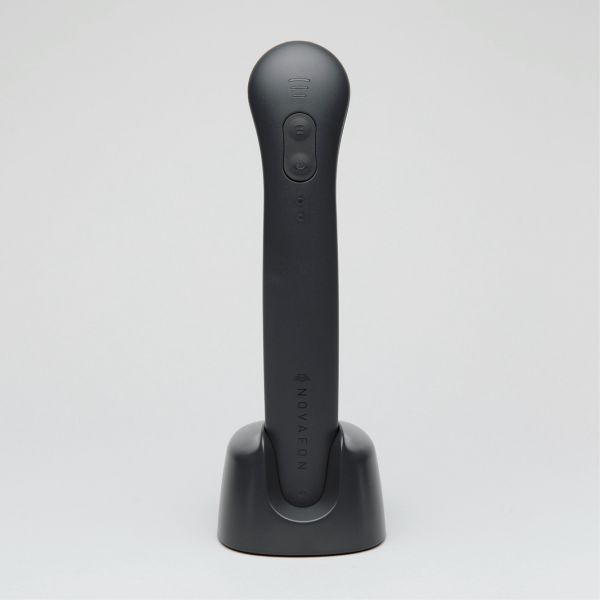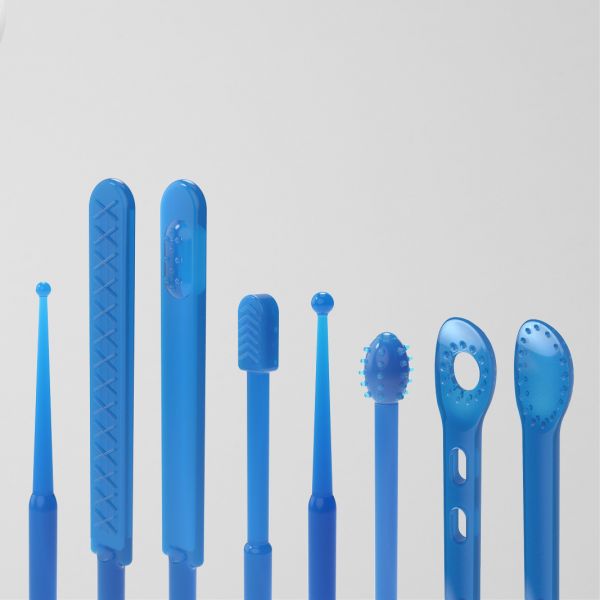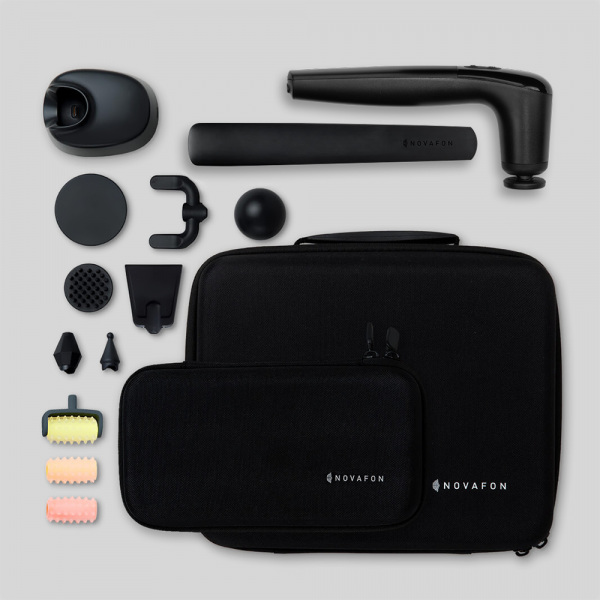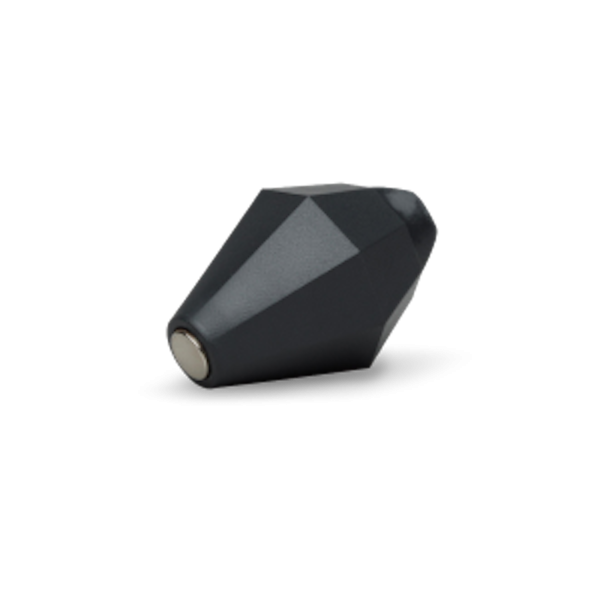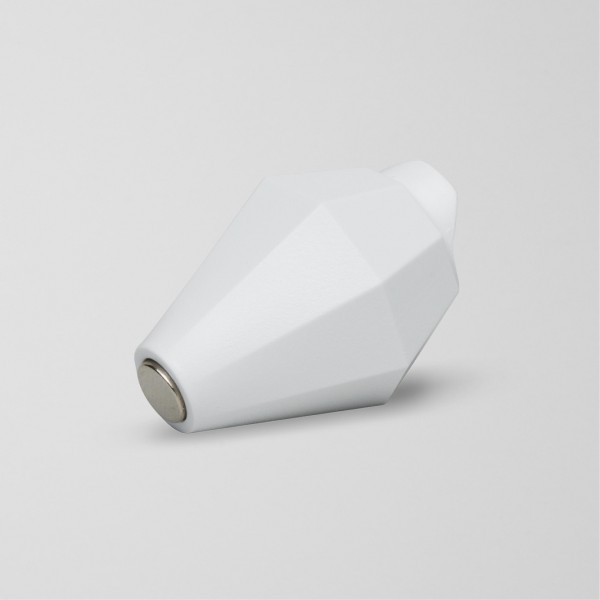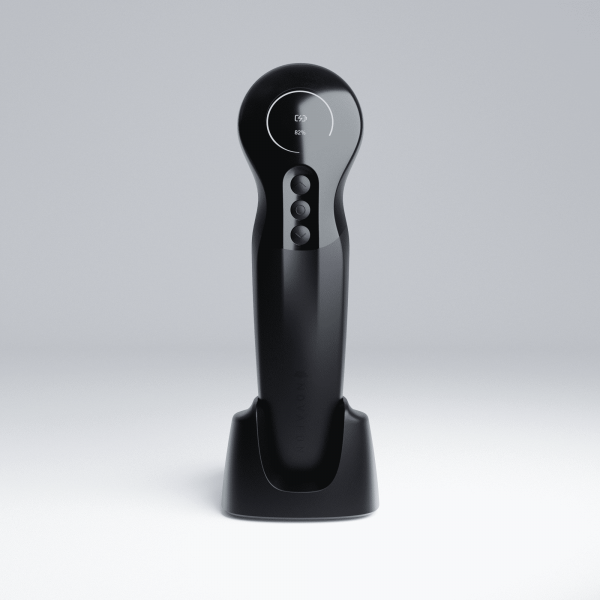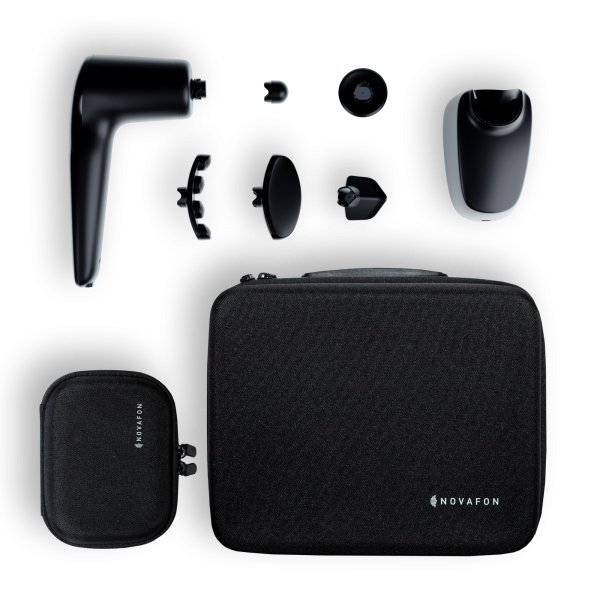Speech
therapy
Occupational
therapy
Physio
therapy
Naturo
pathy
Veterinary
medicine
Improved functionality and
motor control with NOVAFON.
Targeted local vibrotactile stimulation stimulates the sensorimotor system in the fields of orthopaedics and neurology. NOVAFON can help to regulate muscle tension, promote perception and improve motion sequences. This results in an increased motion range and improved functional activation. The deep vibrations stimulate muscles and nerves gently but effectively. They can thus be used as medical aids in the treatment of a wide range of physiotherapeutic indications. Clinical studies have proven a significant added value and lasting therapeutic effects in the treatment of spasticity and musculoskeletal pain.
How to use the NOVAFON device
Spasticity
CMD
Pain
Sports Therapy
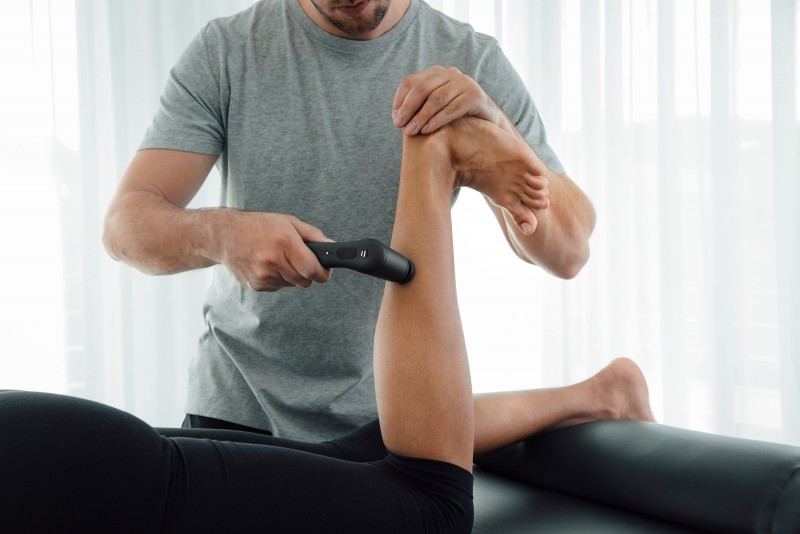
Example: Hemiparesis
Aim: Improvement of gait
Local vibration therapy is used in the treatment of spasticity as a drug-free method for the regulation of muscle tone. Results from the reduction in spasticity caused by the vibrations include an improved gait and an improved grasping function. The stimulation of the sensorimotor system leads to an improvement in motion sequences and in the perception of the affected part of the body. This applies to patients with stroke, traumatic brain injury or multiple sclerosis as well as to children with cerebral palsy.
Recommended device
Recommended accessories
Recommended products
Equipment + Package
Quotes
Vibration therapy constitutes a non-pharmacological form of treatment to control spasticity. In association with physiotherapy, it could be shown to reduce spasticity significantly.” | Casale et al. 2014. Localized 100 Hz vibration improves function and reduces upper limb spasticity: adouble-blind controlled study. European Journal of Physical and Rehabilitation Medicine. Eur J Phys Rehabil Med. 50(5):495-504.
Therapeutic application of peripheral muscle vibration was shown to reduce spasticity with a simultaneous improvement in functionality. The patient’s perception of the affected extremity was increased. Independent of the aetiology of the underlying neurological pathology, vibration therapy reduces spasticity, promotes motor activity and motor learning within a functional activity. | Murillo et al 2014. Focal vibration in neurorehabilitation. Eur J Phys Rehabil Med. 50(2):231-42.
“There are four fundamental areas of application for local vibration therapy in neurorehabilitation, regardless of the respective neurological pathology:
- reduction of spasticity
- easing of muscle contractions in functional activities
- stimulation of the proprioceptive system in order to achieve efficient motor control
- use in proprioceptive training in order to restore sensorimotor organisation in patients with locomotor disorders." | Murillo et al 2014. Focal vibration in neurorehabilitation. Eur J Phys Rehabil Med. 50(2):231-42.
Full package
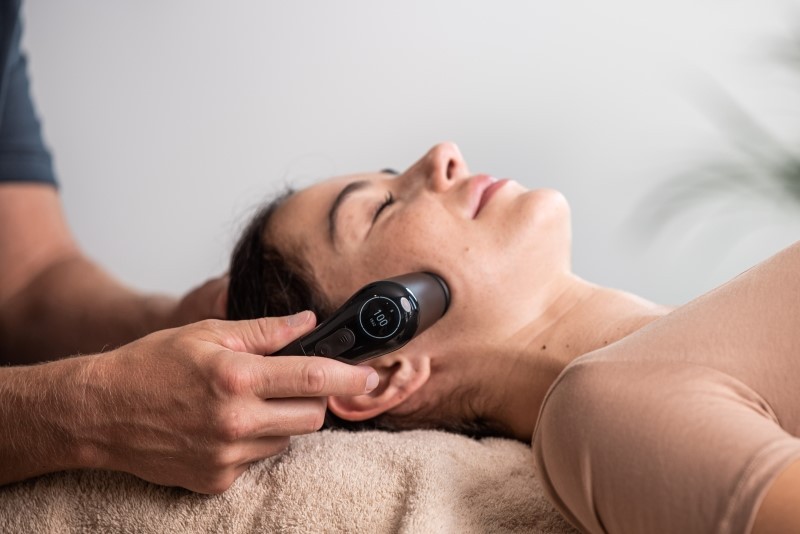
Example: Jaw motion disorder
Aim: Muscle tone regulation and pain reduction
Within the overall concept of CMD therapy, NOVAFON can assist in muscle tone regulation, in the treatment of the mobility disorder and on specific pain points. The aim is to use the deep vibrations for external stimulation along the entire primary and secondary muscles of mastication to relax the entire masticatory system. In addition, treatment “from the inside” is also possible using the intraoral set. In many cases, it takes only a few minutes of treatment to observe a clear improvement in mobility as well as an alleviation of the pain. It is also an option for patients to continue this treatment at home.
Recommended device
Recommended accessories
Recommended products
Equipment
Quotes
“In the treatment of bruxism, we work with a special CMD therapy - available on dental prescription - and very successfully use the NOVAFON device to relax the muscles of mastication in conjunction with special exercises for the patient to promote relaxation of the jaw joint and reduce muscle tone in the masticatory muscle system. (...) Recommendation for the use of the device at home: twice daily before bedtime and after rising for 8 minutes on each side. This is done in a sitting position with elbows propped up, head resting and hanging lower jaw.” | Tanja Wippler, Physiotherapist and CMD Therapist
Studies
Full package

Example: Joint pain
Aim: Pain reduction and improved mobility range
In diseases of the locomotor system, vibration therapy is specifically used for pain relief and for achieving an improved mobility range. The pain-relieving effect of vibrations by stimulating the 1a-afferent pathways has already been studied and confirmed many decades ago. For chronic pain of the locomotor system, in particular, significantly better results were achieved compared to drug-based treatments. Because the treatment is gentle and effective, vibration therapy is very well accepted by patients. Over time, it has become an integral part for the treatment of pain in physiotherapy. For amputation-related pain (phantom pain), it has also been shown to have an obvious pain-relieving effect.
Recommended device
Recommended accessories
Recommended products
Equipment
Studies
Lundeberg T. 1983. Vibratory stimulation for the alleviation of chronic pain.
Lundeberg T, Nordemar R, Ottoson D. 1984a. Pain alleviation by vibratory stimulation.
Lundeberg T. 1985b. Relief of pain from a phantom limb by peripheral stimulation.
Lundeberg T. et al. 1987. Vibratory stimulation compared to placebo in alleviation of pain.
Quotes
“It is evident that many cases of neuralgia were controlled by vibratory stimulation. Concerning chronic low back pain, vibration relieved about 50% of the patients from pain, and patients suffering pain due to a lesion of the central nervous system (central pain) had marked pain reduction. In patients having myalgia it was possible even to relieve the pain permanently. The treatment of tendinitis and epicondylitis was also successful with some patients permanently relieved of pain. The best pain reducing areas for the application of the vibrator was in the region of the area of pain itself or a trigger or motor point outside the painful area.” | Lundeberg T. 1984b. Long-term results of vibratory stimulation as a pain relieving measure for chronic pain.
Full package
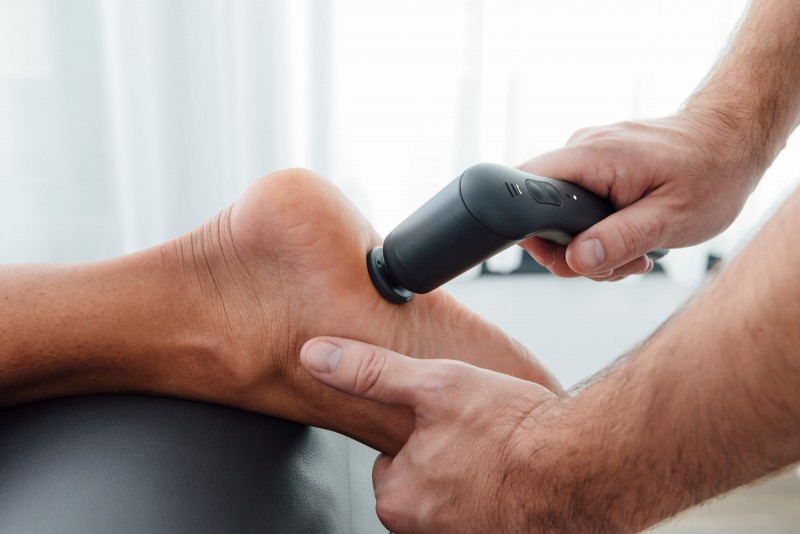
Example: Sports injuries
Aim: Promoting regeneration by tissue stimulation
NOVAFON can be used in athletes both as a preventive and a curative measure. The special effect of the vibrations on muscles and nerves stimulate the body’s own regeneration mechanisms and alleviate pain. The gentle vibrations reach to a depth of 6 cm into the tissue and activate hardened muscles, stimulate irritated tendons and provide relief in chronic inflammatory conditions.
Recommended device
Recommended accessories
Recommended products
Equipment
Quotes
“One of the particular advantages of Novafon Power is that it can be used in prevention as well as in rehabilitation and post-operative care. In many years of looking after numerous athletes, participants in world championships and Olympic Games, I have also had the NOVAFON device in mobile use, in the preparation for competitions as well as in training camps and during competitions themselves.”






